70 years in the service: Bear against the Eagle
Probably in stories domestic aviation there are few aircraft, the birth of which became, if not agony, then a terrible headache for designers.
In what terrible conditions the Tu-95 was created, a lot of bleeding narratives have been written, but we will stop far from undercover intrigues and conspiracies, in principle, it is enough that Tupolev, who is very complex in character, having taken a sip of the “charms” of that era from the heart, survived himself, did not take revenge Kuznetsov for deceit and actually saved him from reprisal. And Tu-95s are still flying on Kuznetsov engines.
Engines. This is pain, starting from the birth of the USSR and ending with the collapse of the country. Aircraft engines - especially. How many good and excellent aircraft designs went to waste precisely because there were no engines, they were not debugged by the deadline, they were not made reliable and powerful - this is the topic of a separate gloomy study. But even after the war, having some German developments in hand, having fledged designers Shvetsov, Klimov, Kuznetsov, all the same, it was just a nightmare with engines in the country.
There was a very unpleasant situation. The Americans had an “old” B-29 at that time, the first carrier of an atomic weapons. We had a Tu-4, a full Xerox B-29. The whole problem was that the B-29, operating from American bases in Europe and Asia, could reach the territory of the USSR, but the Tu-4 had no chance to fly to the USA. And we did not have bases abroad that could be used as "jump" airfields.
And the Americans already had the "Peacemaker" B-36, the plane, on the one hand, was not very successful, on the other hand, it had enormous political weight and size. With a range of 6 km and a bomb load of 000 kg.
It was necessary to answer. In a war-ravaged country, this caused enormous difficulties, but Stalin hurried everyone. The head of the USSR seriously believed that a war with THE OTHER world was inevitable, and to be honest, Stalin had plenty of reasons for this.
But there were no options to “catch up and overtake” the United States, because the Soviet government clutched at any straw in the arms race that had begun, whether it was Myasishchev’s M-4 or Tupolev’s Tu-85. The country needed a strategic bomber capable of flying at a speed of 900-950 km / h at a range of 14-15 thousand kilometers and carrying about 20 tons of combat load.
Now I boldly emphasize that the piston Tu-4 at that time was completely outdated and had no chance of overcoming air defense with jet fighters. The phenomenon of the Tu-95 is that the aircraft is not only relevant today, it also has advantages over world analogues. But first things first.
And in order we have engines. More precisely, their usual absence for the USSR. The only design bureau that promised something more or less comparable to American engines was the Kuznetsov Design Bureau, where, together with German specialists (in foreign language), our engineers tried to make the engine of tomorrow on the basis of the German YuMO-022 engine.
Kuznetsov succeeded. The first sample of the engine, TV-2, had a power of 5000 hp, its forced version was 6 hp, and models TV-250 and TV-10, with a capacity of 12 and 10 thousand horsepower, loomed on the horizon. But Kuznetsov promised to give these engines no earlier than a year later, but Tupolev took a chance and laid down two aircraft: the first under the existing TV-12F engines, for momentary tests, and the second - already under the TV-2, which we now know as NK- 12.
The result was a masterpiece that could puzzle any aeronautical engineer in the world at that time. The TV-2F engines were connected into twins 2TV-2F, consisting of two engines and a gearbox uniting them. With the screw, it also turned out very sincerely, in order to lift such a machine into the air, the screws had to have a diameter of more than 7 meters. In order not to create a crowd of problems for the entire structure as a whole, we decided to install two, smaller diameter and rotating in opposite directions, instead of one huge screw.
How many nerve cells were burned in OKB-120 named after Zhdanov is not known for certain, but the screws were created there. More precisely, the AB-60 screw installation.
In general, the task of placing two strategic aircraft on the wing was in full swing. Here it is worth noting such a thing, who the competition in a country that has just begun to recover from the consequences of the war is a rather ruinous business. But indeed, Stalin was right here, and by the time of D-Day, the country's Air Force could have TWO aircraft capable of performing tasks to destroy the enemy. And choose the best one from them. The “none” option was somehow not even considered, given that all the designers (almost all) were already aware of where you could end up if you did not complete the assigned tasks.
The first flight of the Tu-95, which then had the index "95-1", was made on November 12, 1952 under the control of test pilot A.D. Flight, who later died during the next test flight of the machine.
The plane was not that disappointing, but the reality turned out to be far from the calculated data. The Design Bureau promised a cruising speed of 750-800 km/h at altitudes of 10 to 14 km, and a range of 14 to 17 km. With TV-12 engines and even more: with 9 tons of bombs with a dead weight of 156 tons, the Tu-95 was supposed to have a combat radius of up to 7500 km.
A system of wing-mounted refueling in the air was also planned (other options simply did not exist at that time), with it the Tu-95 received a flight range of up to 32 km (with two refueling, on the way to the target and back), which made it possible to achieve almost any (except Antarctica and a small piece in South America) point the world with nuclear weapons on board and return to base.
The reality turned out to be heavier (182 tons) and slower. And the bomber needed not the estimated 1200 m, but 2300 meters to take off. And the refueling system came in handy, but not as a means of creating a global strike system, but as a means of ensuring the fulfillment of tactical tasks.
A struggle for weight began, and the living conditions of the crew were the first to die in this struggle. Yes, on the one hand, the bomber had to make very long flights, on the other hand, the weight had to be reduced by all available means. That is why, in fact, many things that were included in the design disappeared from the design: places for rest in soundproof rooms, a place for cooking and eating, the bathroom turned into a biopot right in the cockpit.

In general, everything is as usual, Spartan conditions. But Tupolev and Petlyakov had not spoiled Soviet pilots before, and even now there was no exception.
There were no ejection seats on the Tu-95, which became firmly established and were present on the bombers of other firms of the USSR, USA, Great Britain. But they were not required here, we note, because the speed allowed us to leave the plane through the hatches, which were more than enough.
There were also novelties of a different plan, technical progress. For example, a thermally insulated heated bomb bay. Since the Tu-95 was planned to carry free-falling thermonuclear bombs, he needed such a compartment. And they did it. The temperature in the compartment varied from +5 to +25 degrees Celsius.
Another novelty was the use of aluminum wiring, which saved about half a ton of weight. A system for heating planes and propellers with electricity was implemented.
In general, the largest possible number of units and parts from the Tu-95 was used in the design of the Tu-85, which significantly reduced the time for delivery of the first machine.
In 1955, everything fell into place: the tests were completed and the Tu-95 was put into serial production and put into service in August 1957. The aircraft was produced in two modifications, Tu-95 and Tu-95M. The second model differed from the first in increased fuel capacity.
Tu-95 for a long time became the main and only means of nuclear deterrence. ICBMs appeared later, and before they appeared, the bomber became the main strategic weapon of the USSR.
The bomber was mass-produced until 1959. A total of 212 aircraft of all modifications were manufactured. In addition to the strategic bomber, 4 Tu-95MR strategic reconnaissance aircraft, 52 Tu-95RTs naval reconnaissance aircraft, and 2 Tu-116 special transport aircraft (Tu-114D, where "d" is "diplomatic") were released.
Tu-95 strategic bombers were designed to deliver bombing strikes, including nuclear weapons, on strategic targets located deep behind enemy lines. At the time of its creation, it was believed that the combination of high flight speed, altitude and powerful defensive weapons would guarantee strategic bombers a breakthrough in the enemy's air defense system and strike at targets.
Defensive armament at that time was quite: three installations with two 23-mm cannons gave almost spherical protection against fighters, and wherever enemy aircraft came from, at least four barrels met them. The upper and lower towers were remotely controlled by gunners, and the stern was equipped with an Argon radar sight, data from which could be transmitted to gunners.
In general, the "Bear" turned out to be very toothy.
The bomb load varied from 5 to 15 tons depending on the flight range.
On the first Tu-95s, the crew consisted of eight people:
- two pilots, one of whom was the crew commander;
- navigator;
- flight engineer;
- navigator-operator, who can also be called a scorer;
- gunner-radio operator, who was in the front pressurized cabin and controlled the upper installation;
- two arrows in the aft cockpit, controlling the lower and aft installations.
In general, it turned out to be a completely different aircraft from the United States, but it was our carrier of nuclear weapons, and this had to be reckoned with.
And throughout the work on the Tu-95, the Tupolev Design Bureau did not stop work on improving the aircraft. This was due to the fact that progress gave rise to anti-aircraft missiles and supersonic interceptors. The concept of "speed at altitude" for bombers was rapidly becoming obsolete.
Thus, all work on the Tu-96, which had already been released in 1956 for factory tests, was stopped. This aircraft was larger than the Tu-95, it was equipped with new, more powerful NK-16 engines, which were supposed to provide a speed of 800-850 km / h at an altitude of 17 meters. But this height no longer saved from interceptors and anti-aircraft missiles.
By the beginning of the sixties, it became clear that the future lay with weapons capable of attacking due to the range of enemy air defenses. The missiles of that time did not yet have a long range, so the combination of a missile and a carrier aircraft looked very, very promising.
Already in 1955, on the basis of the Tu-95, they began to develop the Tu-95K-20 aviation missile strike system, which consisted of the Tu-95K carrier aircraft and the Kh-20 missile.
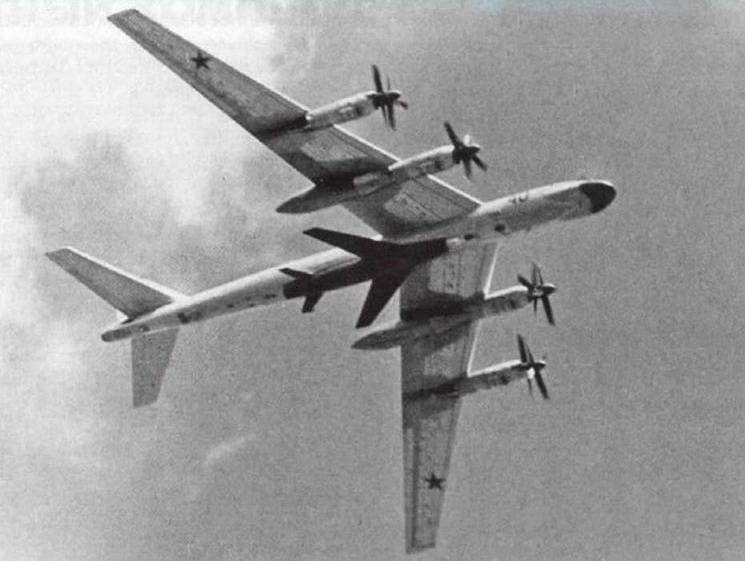
The X-20 missile, developed by the Mikoyan Design Bureau, was more of a projectile based on the MiG-19 fighter. A product weighing almost 12 tons could fly up to 600 km at a speed of 2M, carrying a thermonuclear warhead, the so-called "product 37D", weighing 2300 kg and with a capacity of 3 Mt.
The Tu-95K carrier aircraft was significantly redesigned: a new nose was designed, where radars for detecting a target and pointing a projectile at it were installed. A special mechanism was placed in the bomb bay, which raised the X-20 into the bomb bay, and lowered the X-20 in flight before launch.
Alterations had a negative impact on the aerodynamics of the Tu-95K, as a result of which the flight range was significantly reduced. The salvation was in the new air refueling system, which the Tupolev Design Bureau successfully developed the "cone-hose" system, which began to be installed on aircraft in 1961. Aircraft with a new refueling system were named Tu-95KD and, together with the usual Tu-95K, were produced until 1965.
In the early seventies, it was decided to convert the Tu-95K and Tu-95KD into carriers of guided air-to-ground missiles, similar to those used on the Tu-22 and Tu-22M supersonic bombers. The unification of the controlled combat load on long-range and strategic bombers made it possible to expand the horizons for the use of aircraft and at the same time solve economic issues.
The new Tu-95K-22 complex included one or two missiles, which were hung on underwing pylons or placed in the bomb bay.
Then, in the second half of the sixties - early seventies, the Tu-95 mastered a new specialty for itself: on the basis of the bomber, the Tu-95RTs long-range reconnaissance and target designation aircraft and the Tu-126 early radar detection aircraft were created.
These were very complex complexes made according to the latest Soviet radio electronics and allowed the Soviet the fleetwho, for the first time, began to explore the far ocean zone, to see, moreover, to see far.
Tu-126 aircraft, carriers of the Liana early detection complex, successfully served until the very collapse of the USSR, they were subsequently replaced by A-50s.
Not so many Tu-126s were produced, only 9 machines, but they made a significant contribution to providing the fleet with intelligence data.
And on the basis of the Tu-95RTS, they were able to create another very useful machine: the Tu-142 anti-submarine aircraft, which was put into service in 1972.
This aircraft was an anti-submarine strike system capable of finding enemy submarines and destroying them, regardless of their position, surface or underwater. The small arms of the Tu-142 were reduced to two 23-mm AM-23 or GSh-23M cannons. The basis of the weapons of the PLO aircraft are search beacons and means of destroying submarines, we had no shortage of these types of weapons, so the Tu-142 was a very formidable enemy for all submarines. About a hundred Tu-142s were manufactured, today 22 aircraft of this type continue to serve.
The 52s brought yet another innovation: cruise missiles, which became very firmly established in the life of the strategic forces of the major world powers. In the United States, work has begun on converting their B-95 strategic bomber into a cruise missile carrier. The USSR, as usual, accepted the challenge and responded by creating a whole series of missile carriers. Tu-5M-95 (Tu-26K-5), armed with two KSR-16 missiles from Tu-26K-95, Tu-55M-95 and, finally, Tu-XNUMXMS, which is still in service today.
Tu-95MS, put into service in 1979, is relevant and modern, no matter what.
The aircraft has very high defensive capabilities, many experts in different countries rated it as "indestructible". By the way, our crews were of the same opinion. The airborne defense complex significantly surpassed the defensive capabilities of the B-52.
The electronics installed on the Tu-95MS is a military masterpiece, there is no other way to say it. It was on the Tu-95MS that the designers were able to work out the problems of EMI compatibility, which drank so much blood from the designers when working on the Tu-160.
Here it is worth mentioning the increased role of the former shooter of the stern gun mount, who has now become the operator of the KOU, the stern firing mount. But the fire at the installation has changed. No, 23-mm shells are still relevant, and the operator can treat them heartily. But the main thing in the KOU is electronic systems that simply do not allow the enemy to direct missiles at the aircraft.
In the summer of 1987, demonstrative maneuvers were carried out when, at an altitude of 8000 meters, at night, but in simple weather conditions, the Tu-95MS was “attacked” by the MiG-31 aircraft, the most modern aircraft in terms of electronic “minced meat” of that time. And the crew of the MiG-31 reported that they could work with a cannon on a visually observed Tu-95MS, but they could not launch missiles.
Given that the capabilities of the MiG-31 in those years in terms of intercepting and destroying aircraft were an order of magnitude higher than those of the same F-15 or Mirage, one could simply sympathize with the pilots of the latter. So even today, the stern shooter, who has become the operator of insidious systems, is very relevant and necessary.
In general, the Tu-95MS has become a new milestone in the domestic aircraft industry. It was an aircraft of a new level of comfort, but not in terms of crew flight conditions, but in terms of application. The bombing past, when in order to strike an aircraft would have to enter the zone of operation of enemy air defense aviation and anti-aircraft missile systems, have sunk into history. All the crew had to do was to successfully bring the aircraft to a certain point on the map, from where the cruise missiles were launched. The crew did not know either the goals or the consequences, which was pretty decent in terms of the psychological burden on the flight crew.
Well, one cannot fail to note the peaceful use of the Tu-95. As the Tu-16 was made on the basis of the Tu-104, so the Tu-95 turned out from the Tu-114. But if the Tu-104 did not differ in reliability and comfortable flight, then the Tu-114 turned out to be quite a decent passenger aircraft.
Yes, NK-12s were… noisy. But the plane was more than reliable, for the entire period of operation there was one disaster, and that was the fault of the pilots and airfield services. But the flight from Moscow to Havana with one landing in those years is my respect.
Speaking of military service, surprisingly, the Tu-95 is a very peaceful aircraft. His baptism of fire took place only in November 2015, the strategists attacked ISIS targets in Syria with Kh-55 missiles.
In 2016 and 2017, Kh-101 missiles were used from Tu-95s in Syria.
And before those events, Tu-95 aircraft took part in a combat operation only once, in 1979. Then the Chinese decided to "educate" Vietnam, which set a course for strengthening in the region and friendship with the USSR. And the so-called "First Socialist War" began.
Aircraft of the 304th regiment of the Navy participated in the naval blockade of the Gulf of Tonkin during the Sino-Vietnamese War. Then a group of 13 Pacific Fleet ships was deployed in the South China Sea, Tu-95RTs were engaged in reconnaissance and target designation. As a result, the Chinese fleet did not dare to take part in the conflict, the US Navy ships hanging out nearby, together with the Constellation aircraft carrier, did not enter the conflict zone, as a result, the war ended with the victory of Vietnam.
After that, the government of Vietnam, appreciating the help of the USSR, placed at the disposal of the Soviet fleet the harbor of Cam Ranh along with the airfield. And from there, until the very end of the USSR, Tu-95RTs and Tu-142 flights from the combined squadron of the 169th SAP of the Navy flew. This squadron of 8 aircraft spoiled the mood of the entire US Pacific Fleet, since it was possible to control the entire southern Pacific and Indian Oceans from Cam Ranh. The commanders of the formations based in the Philippines were especially furious.
Unfortunately, today, from more than one and a half hundred Tu-95RTs and Tu-142, there are miserable scraps in the form of two squadrons in the Northern and Pacific Fleets, which, of course, is not a sign of the power of the fleet.
The Tu-95MS, which today are taking the Tu-95MSM to a new level, and of which there are only 60 out of 500 vehicles left, the prospects are also not very bright - to serve until the end of the resource. In fairness, it should be noted that a colleague in the service, the American B-52, is doing no better, and about 70 machines out of more than 700 produced have remained in working (often conditionally) condition.
But the Tu-95 will serve as long as possible. The point here is not some kind of economy (although it is also in it), the aircraft is relevant, despite its age. We need modern sighting and navigation equipment, modern protection systems, modern weapons. It's all right here.
Yes, the speed of the Tu-95 is frankly low, which does not give it any special advantages, but 900 km / h for the Tu-95 and 2200 km / h for the Tu-160 are not as important today as they used to be. The question is the time it will take the interceptor. Yes, the Tu-160 will be chased longer, that's all.
But the Tu-95, with its theater of operations, has one significant advantage over jet aircraft: it is not as well visible in the thermal range. And for satellites that can track aircraft in a heat trail, detecting the Tu-95 is much more difficult than the Tu-160. This is a fact that many experts talk about.
So the "Bear" is still very relevant and useful, despite the fact that it will soon celebrate its seventieth anniversary. Long story, and by the way, it's great that it's not bloody, unlike the B-52.
In the third article, we will analyze in detail who is still better, "Fortress" or "Bear". Carefully and carefully. There will be many interesting moments, so do not say goodbye to them for a long time.
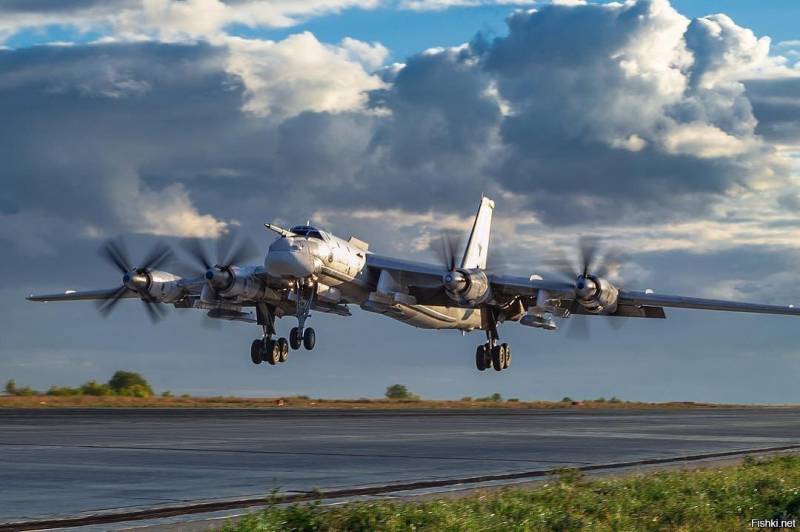
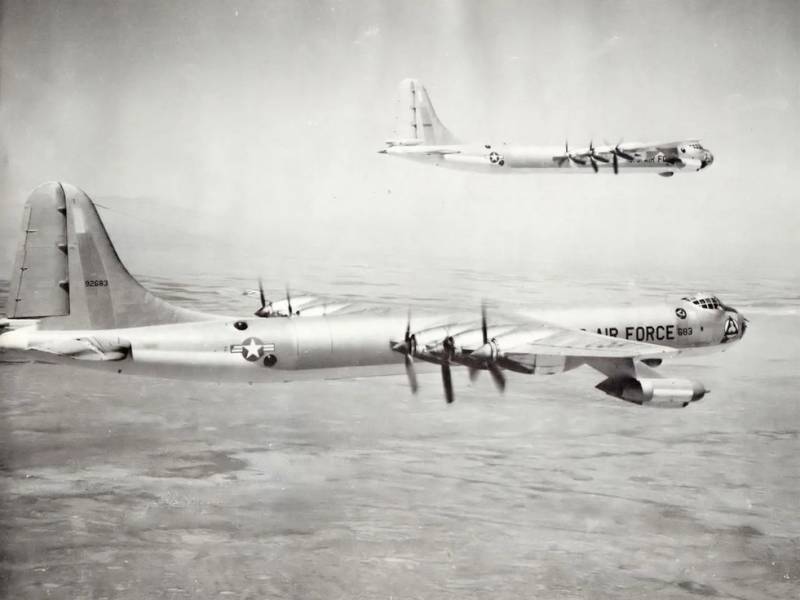
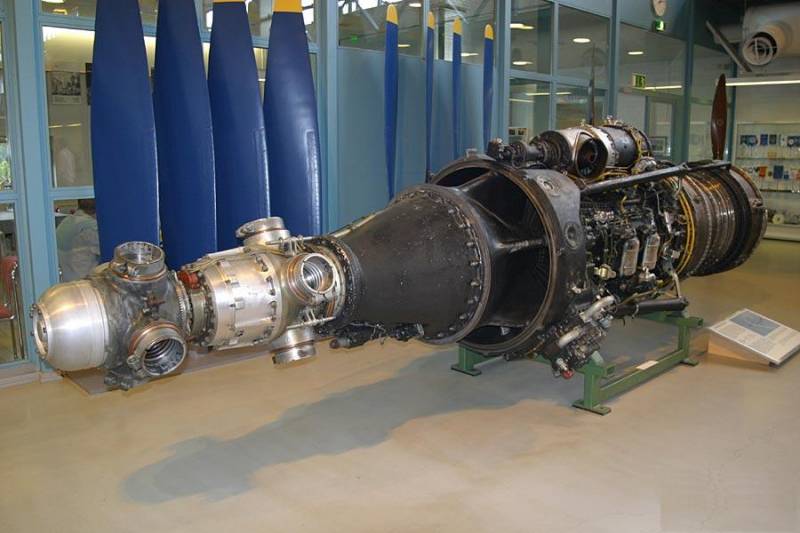
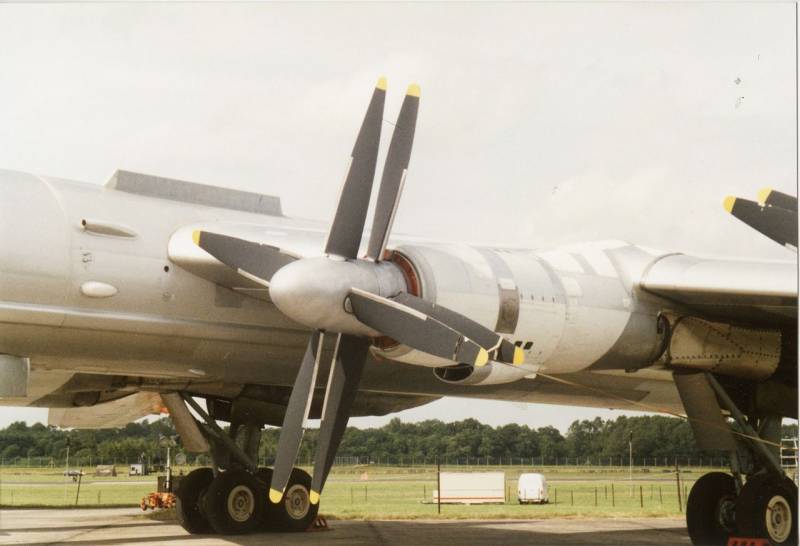
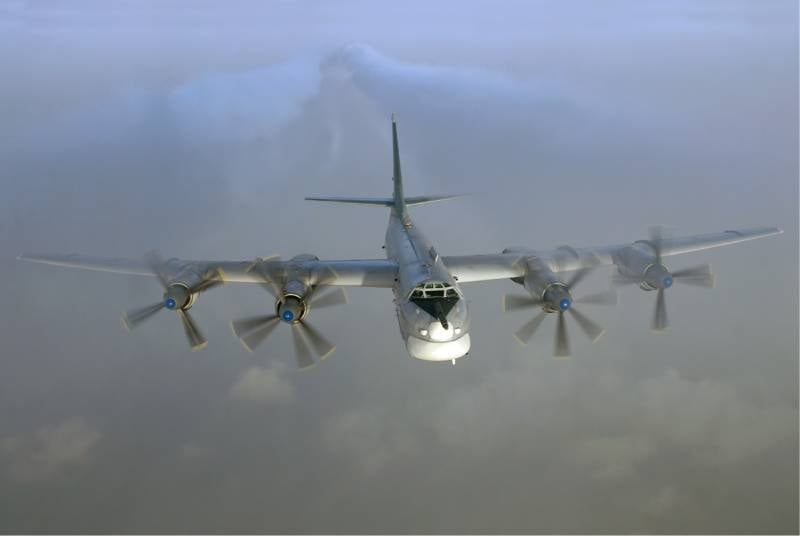

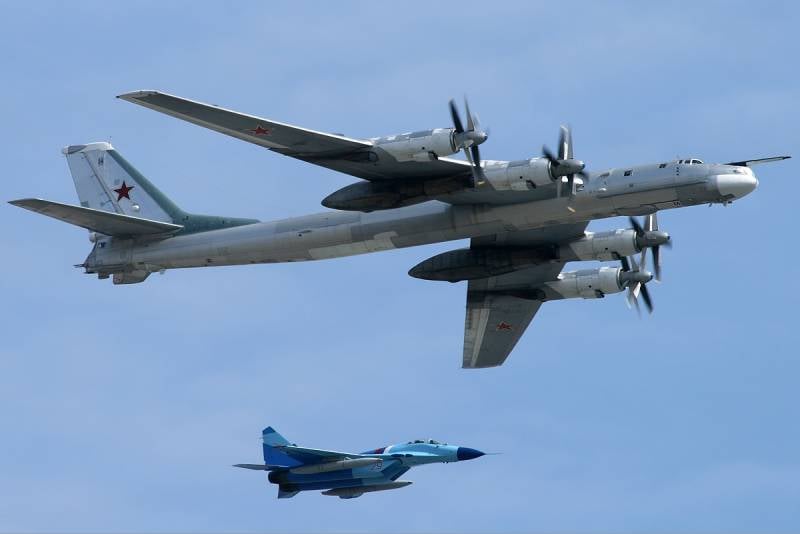
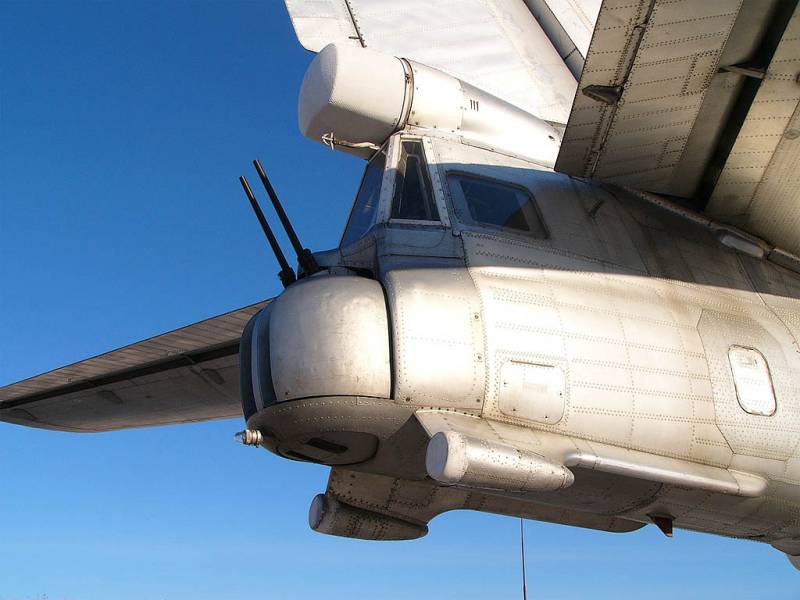
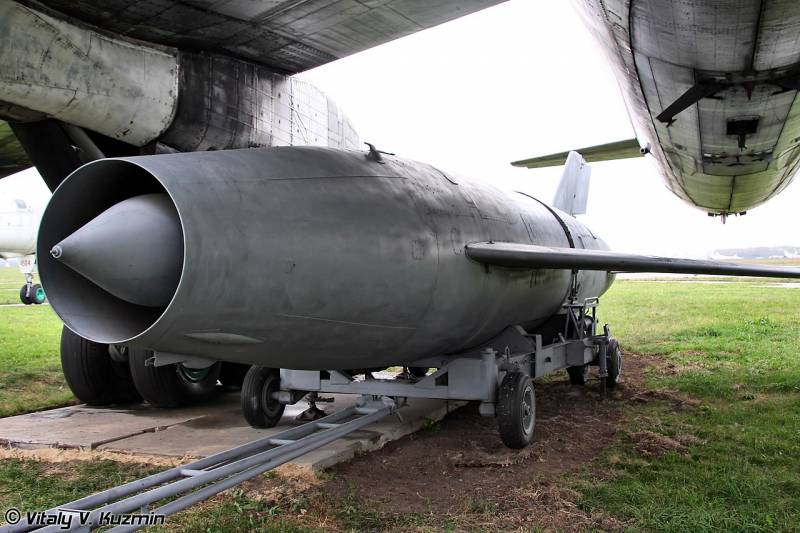
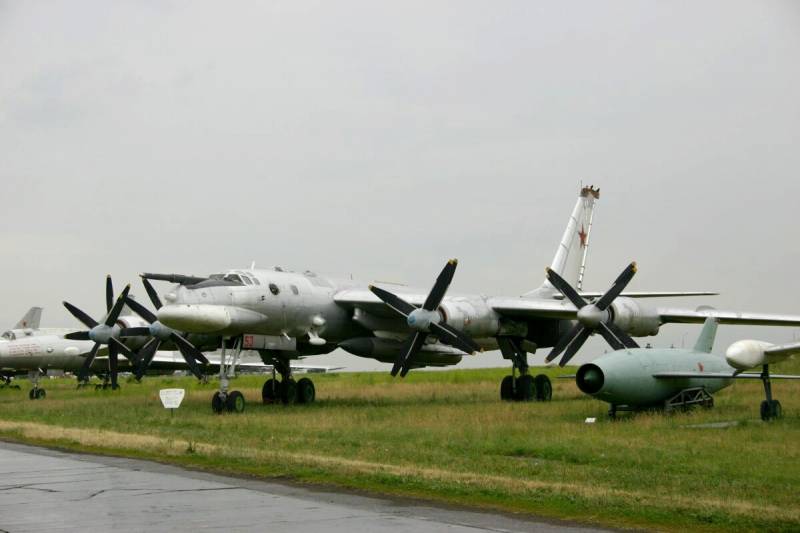

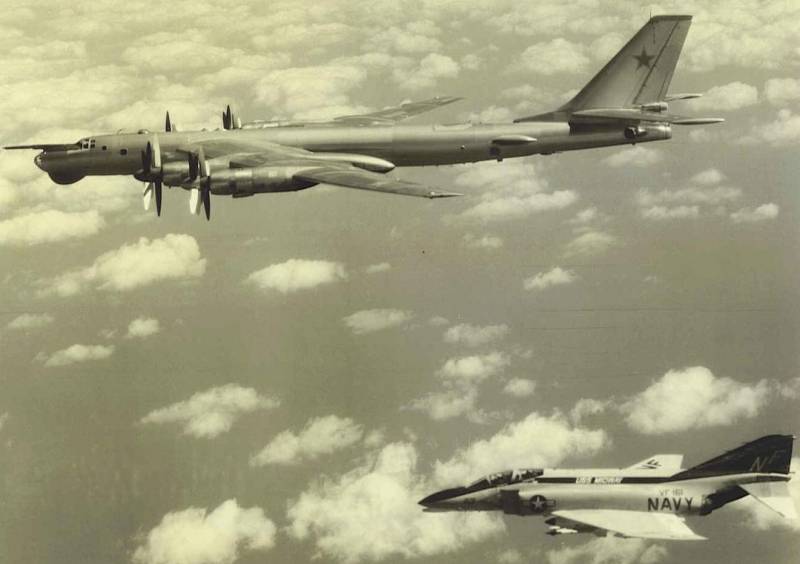

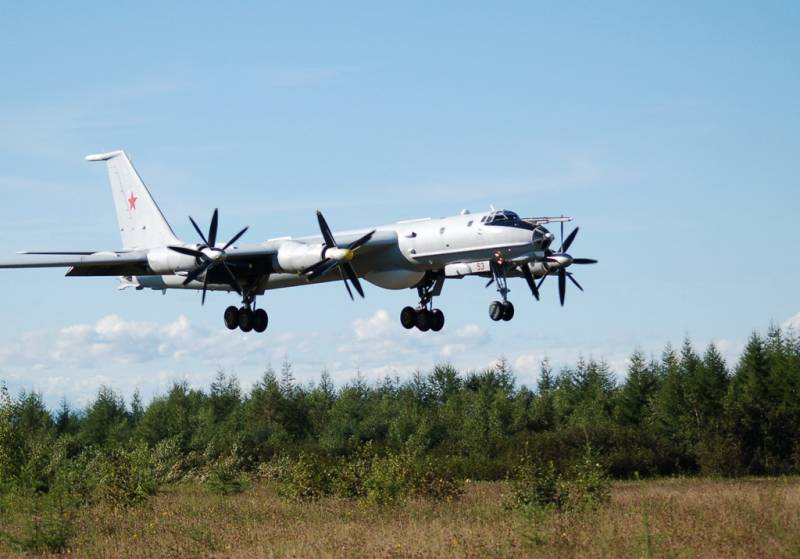
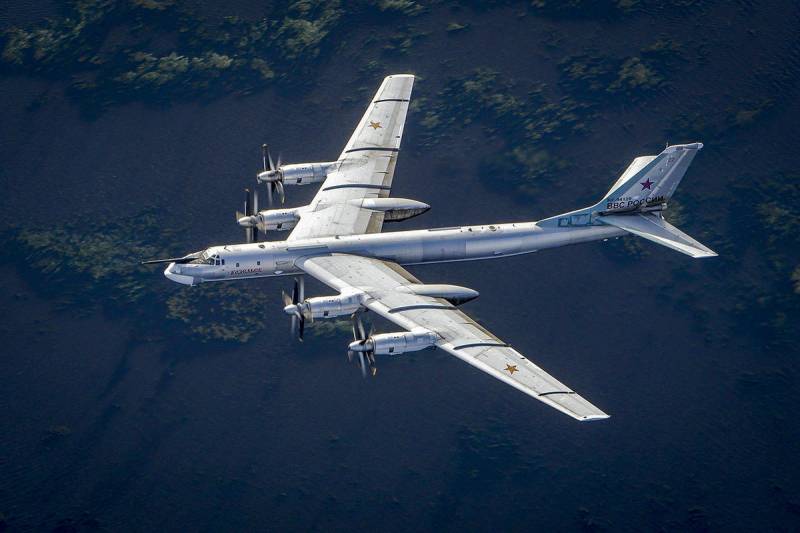


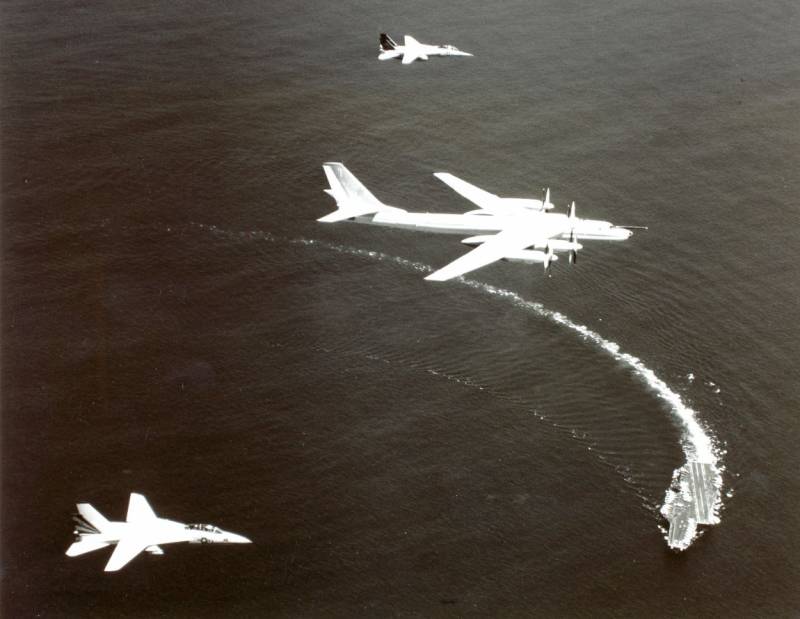

Information